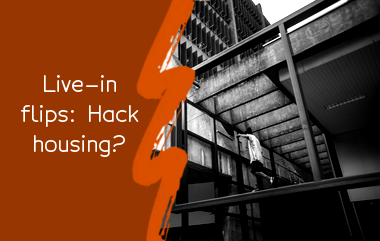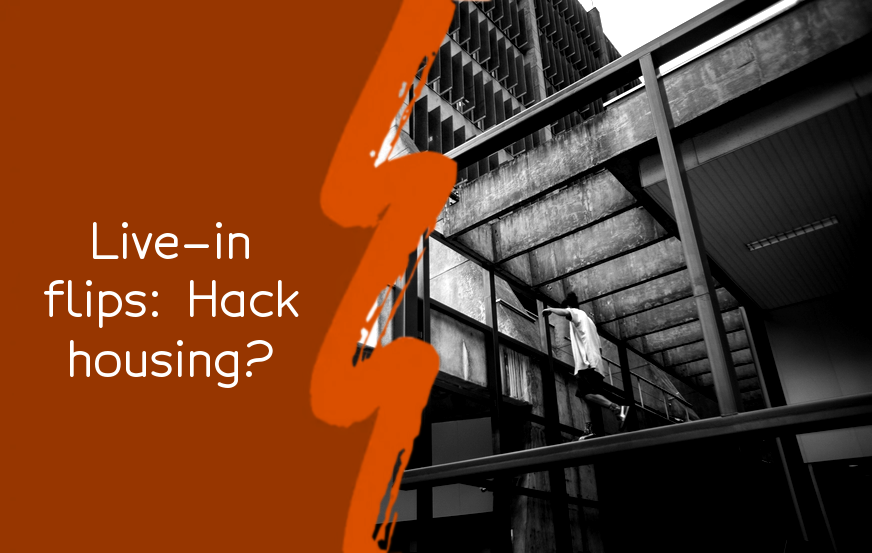What Is a House Flip?
A house flip is a term used in the real estate industry to describe the practice of buying a property, typically a distressed or outdated home, with the intention of renovating or upgrading it and then quickly selling it for a profit. The process of house flipping involves identifying properties that are undervalued or in need of repairs, negotiating a favorable purchase price, investing in renovations or upgrades to improve the overall value of the property, and then selling it for a higher price. The goal of house flipping is to buy low, invest in the property, and then sell high, ideally within a short period of time to maximize profits.
What Is a Live-In Flip?
A live-in flip is a real estate investment strategy in which the investor purchases a property with the intention of living in it while they renovate and make improvements, then selling it for a profit. This approach allows the investor to minimize their housing expenses while they work on the property, which can help maximize the eventual return on investment. It can also be an effective way to build sweat equity, where the investor's time and effort can increase the property's value without spending additional money on contractors or labor costs.
Advantages of Live-In House Flips
Live-in house flipping can have several advantages, including:
- 1Reduced tax liability: If you live in the property for at least two years before selling it, you can avoid paying capital gains tax on the profits up to a certain amount. This can result in significant savings in the long run.
- 2Cost-effective renovations: When you live in the property, you can prioritize renovations that are essential for your comfort and well-being, and only spend money on upgrades that will increase the property's value.
- 3Better market timing: By living in the property, you can wait for the right market conditions to sell. This can help you maximize your profits and avoid selling when the market is down.
- 4Increased control: When you live in the property, you have more control over the renovation process and can ensure that the work is done to your standards.
- 5Higher resale value: A property that has been lived in and well-maintained can often sell for a higher price than a vacant or rental property. This is because buyers can see the potential for comfortable living and may be willing to pay a premium for it.
Overall, live-in house flips can be a smart way to generate income and build wealth in real estate. However, they require a significant time commitment and can be challenging for those who are not comfortable with renovation work or living in a construction zone.
Risks & Downsides of Live-In Flipping
Live-in flipping can be a potentially profitable venture, but it also comes with several risks and downsides. Below are some of the risks and downsides of live-in flipping:
- 1High upfront costs: Renovating a home can be expensive, and it can take a lot of money to get a property up to standard. The initial costs of purchasing a property and renovating it can put a significant strain on one's finances.
- 2Long time commitments: Live-in flipping requires a significant investment of time and effort. It can take months or even years to complete a renovation project, and you'll need to live in the property through most of it.
- 3Uncertainty: Renovation projects can be volatile, and there are plenty of risks that can disrupt your plans and cause significant delays. You may encounter unexpected issues, such as structural damage, that can be costly to fix.
- 4Legal issues: Live-in flipping can be a more complicated process legally. If you take out loans to finance the project, you'll need to be diligent about meeting payment requirements. Additionally, you'll need to be mindful of zoning regulations and permit requirements.
- 5Lack of privacy: Living in a home with ongoing renovations can be noisy, messy, and disruptive. It can also be frustrating when sharing the living space with contractors and tradespeople.
- 6Emotional stress: Live-in flipping can be an emotional rollercoaster, especially if you're investing a lot of money in the project. It can be stressful to see things not going as planned or to worry about whether you will recoup your investment.
In summary, live-in flipping involves significant commitment, risk, and uncertainty. To succeed, you need to be prepared to invest time and resources heavily, be prepared for unexpected expenses, and have a clear understanding of the risks involved.
Should You Do a Live-In House Flip?
A live-in house flip refers to purchasing a property, moving into it, and renovating it while you live there. As a live-in house flipper, you can significantly reduce your living expenses since you are not paying rent or a mortgage elsewhere. Additionally, living in the property during the renovation process gives you the opportunity to oversee the project and ensure that everything is done to your specifications.
However, there are some potential downsides to consider. Living in a construction site can be challenging and uncomfortable, especially if you have a family or pets. You may also find it difficult to maintain your privacy and personal space during the renovation process. Additionally, if you are not experienced in home renovation, taking on such a project while living in the property could be overwhelming and stressful.
Ultimately, whether or not to do a live-in house flip depends on your personal goals, level of experience, and willingness to handle the challenges that come along with it. It's worth weighing the pros and cons and carefully considering whether this is the right option for you before making a decision.
Just one more thing: if you liked the article, please like us on social media and share this article with friends.



